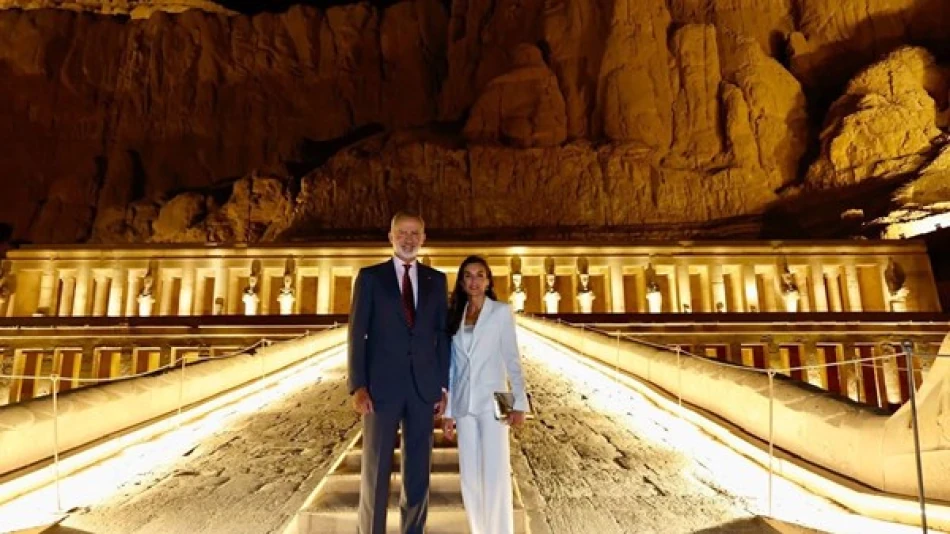
Spain's Royal Couple Explore Egypt's Rich Cultural Heritage and Historic Sites
Spain's Royal Visit to Egypt Signals Growing Cultural Diplomacy in Tourism Recovery
King Felipe VI and Queen Letizia of Spain concluded their historic state visit to Egypt with an extensive tour of Luxor's ancient monuments, underscoring how cultural diplomacy is becoming a key tool for reviving international tourism in the post-pandemic era. The royal couple's carefully choreographed visit to the former capital of ancient Egypt highlights Spain's deepening ties with North Africa and the strategic importance both nations place on heritage tourism as an economic driver.
Royal Immersion in Ancient Thebes
The Spanish monarchs spent Friday exploring Luxor's archaeological treasures, including the temples and tombs of ancient Thebes that were constructed thousands of years ago on both sides of the Nile. Their itinerary focused heavily on Egypt's pharaonic heritage, with extended briefings on the civilization that once ruled from this ancient capital.
A highlight of the visit was the royal tour of Hatshepsut's Mortuary Temple at Deir el-Bahari, where the couple took what local media dubbed a "royal selfie" among the ancient columns. The temple holds particular significance as it recently underwent an illumination project involving Spanish lighting experts, representing the kind of technical collaboration that often accompanies high-level diplomatic visits.
Strategic Timing for Egypt's Tourism Push
The visit comes at a crucial moment for Egypt's tourism sector, which has been working to rebuild international visitor numbers following years of regional instability and pandemic-related travel restrictions. Luxor Governor Abdel-Muttalib Emara and local tourism officials emphasized that such high-profile royal visits generate significant media coverage and help restore confidence in Egypt as a safe destination for European travelers.
Spain represents Egypt's fourth-largest source of European tourists, making this diplomatic engagement particularly valuable for Egypt's economic recovery efforts. The visual impact of European royalty touring ancient sites sends a powerful message about Egypt's stability and accessibility to international visitors.
Cultural Diplomacy as Economic Strategy
This visit reflects a broader trend where European monarchies are increasingly leveraging cultural diplomacy to strengthen economic ties with North African and Middle Eastern partners. Similar royal visits have proven effective in boosting tourism flows, as seen with recent British and Dutch royal tours to Jordan and Morocco.
The Spanish royal couple's Egypt tour, which began with a state dinner hosted by President Abdel Fattah el-Sisi at the Giza Pyramids, demonstrates how ancient heritage sites are being repositioned as venues for modern diplomatic engagement. This approach helps both countries showcase their historical connections while advancing contemporary economic interests.
Beyond Tourism: Broader Bilateral Implications
While tourism promotion appears to be the primary focus, such visits typically lay groundwork for expanded cooperation in areas including renewable energy, infrastructure development, and trade. Spain's expertise in solar energy and Egypt's ambitious renewable energy projects suggest potential collaboration opportunities that extend well beyond the cultural sector.
The timing also coincides with Egypt's efforts to diversify its international partnerships amid shifting global economic dynamics. European engagement with Egypt has intensified as both sides seek alternatives to traditional trade relationships affected by geopolitical tensions elsewhere.
Most Viewed News

 Layla Al Mansoori
Layla Al Mansoori






